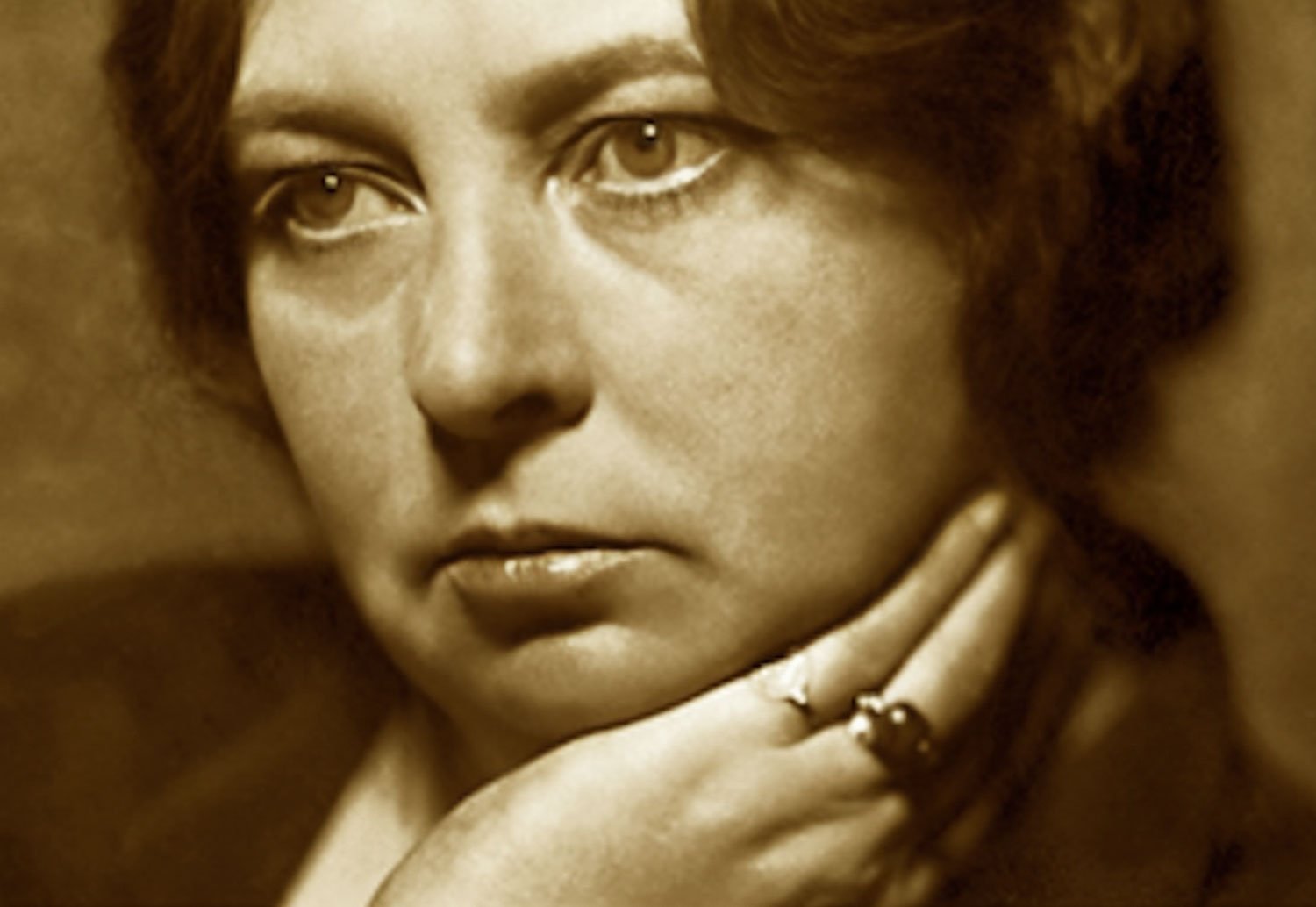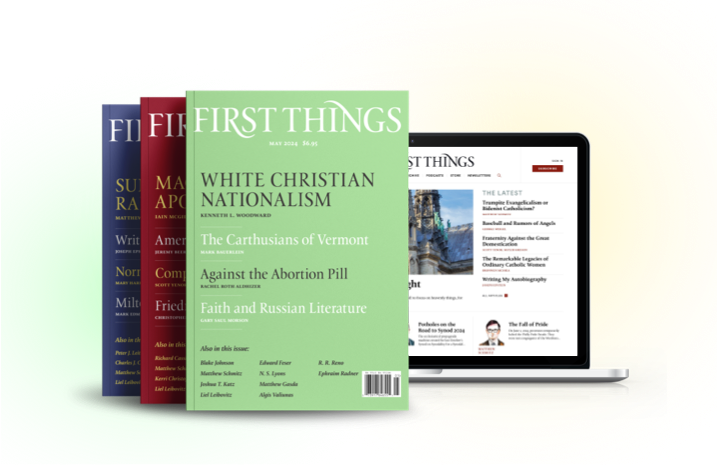
One hundred years ago today, at the age of forty-two, Norwegian novelist Sigrid Undset entered the Catholic Church. It was a quiet affair: just her godmother—photographer and fellow convert Mathea Bådstø—and a few others gathered in the recently-completed St. Torfinn’s chapel in Hamar, on the shores of Lake Mjøsa in eastern Norway. The next day, the Feast of All Souls, Undset received her First Communion in the same chapel, alongside two other village children—an experience she described as “like being in Paradise.”
The Paradise of her conversion was, of course, short-lived: “I had fancied I would be una sancta perfecta, as soon as I was received into the Church and had received Holy Communion,” she wrote to her friend Helena Nyblom shortly afterward, “and then I experienced 77 irritating incidents and became grumpy and angry as a Catholic woman should not be, and behaved not like a saint at all.”
Still, the date of her entrance into the Church, the Feast of All Saints, must have held profound significance for her. The recognition of a host of hidden “friends,” which Undset had absorbed from her vast and sympathetic reading in medieval literature, comes through in nearly every page of her masterful trilogy, Kristin Lavransdatter. Completed before her conversion, the saga introduces us to a number of Norway’s heavenly intercessors: St. Sunniva, St. Hallvard, and, most significantly, Norway’s patron saint, the great St. Olav Haraldsson, Rex Perpetuus Norvegiæ. Kristin develops a particular devotion to him: “He was the one she had heard so much about that it was as though she had known him while he had lived in Norway and had seen him here on earth.”
Like her titular character, Undset came to realize through these encounters with “God’s friends” that she was ultimately made for divine friendship. “In the saints,” she wrote much later, “is realized the object God had in creating us.” Her recognition of what she called the “bright doctrine” of the communion of the saints helped her reconcile a keen sense of imperfection and isolation with an intense desire for someone to draw her out of her own ferocious self-will. “The homage paid to the saints,” she wrote, “fostered by the Church from the beginning, really seems to answer an ineradicable need of our nature.”
That “ineradicable need,” she says, is a desire for heroes and authorities whom we can emulate and whose counsels we can heed. “Our human nature suffers from an incurable desire for some authority,” she writes in a 1939 essay on her conversion, “Beyond Human Limitations”: “We want someone set over us on whom we can depend and whom we can admire—yes, whom we can love.” She warns that this desire, when answered in a purely secular manner, will assume a “pathological form” for both the individual and society.
We see this pathology paraded daily by TikTok stars and YouTube personalities, and, more recently, by pop stars and billionaires on the stages of our presidential rallies. “In lieu of better,” Undset says, “we have made heroes of match kings and gangsters, sportsmen and artists, film stars and dictators.” But amidst these secular heroes there remain God’s hidden “influencers,” the saints, whom Undset recognized as the only “thoroughly sane people, of our civilization. . . . They seemed to know the true explanation of man’s undying hunger for happiness—his tragically insufficient love of peace, justice, and goodwill to his fellow men, his everlasting fall from grace.”
Luther, in his commentary on St. Paul’s letter to the Galatians, had called the invocation of saints “a most abominable blindness and heresy.” While Norway and other parts of post-Reformation Europe were left spiritually “friendless” for centuries, Undset suggests, a wedge had been opened for man’s godless self-reliance and for false ideologies of control to spread unchecked.
Now, nearly a century after Undset’s warnings, half of Norway’s population identifies as agnostic; only about 3 percent regularly attend church services. Yet recently there have been signs of what may be termed a “Nordic Spring.” This renewal can be sensed in the writings of the Trappist Erik Varden, the first Norwegian Bishop of Trondheim in forty years. It is hinted at in the recent ordination of Deacon Mathias Ledum from Undset’s hometown, wearing vestments she had donated to the church. Ledum, the first Catholic priestly vocation in Lillehammer in over five hundred years, recently said, “In the same way as Undset did, I want to re-introduce the truth, beauty and goodness of the Catholic faith to my fellow countrymen.”
Last year, Jon Fosse, a convert to Catholicism, became the first Norwegian to receive the Nobel Prize for Literature since Sigrid Undset was awarded hers, amid much anti-Catholic wrangling, in 1928. And the return of “God’s friends” is being felt in the reigniting of annual pilgrimages on the Feasts of St. Olav and St. Sunniva, and in the vast preparations underway for the jubilee of Olav’s martyrdom at the Battle of Stiklestad in 1030.
Perhaps, then, it is not too bold to suggest that Sigrid Undset, a century after her first taste of Paradise, now advocates for her earthly friends from the other side of the veil.
I Fear I Hate the Homeless
Last year, a week before Thanksgiving, a homeless man stabbed three people to death in Manhattan. The…
Lent and the Purification of Memory
On December 20, 2002, I was at lunch in the papal apartment when the wide-ranging conversation John…
Hide the Crucifix or Lose Your Job
In January, Marisol Arroyo-Castro, a public school teacher in New Britain, Connecticut, with over three decades of…

